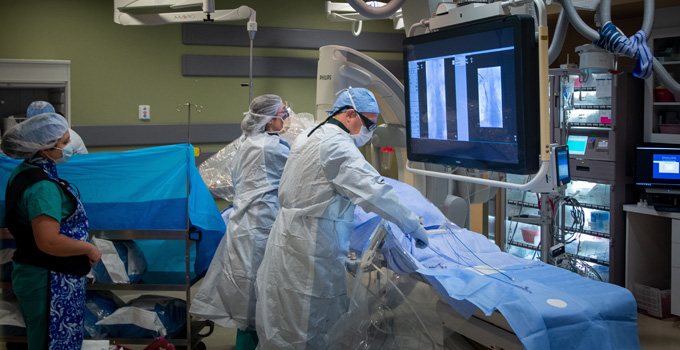The highly anticipated critical care tower (CCT) will be home to some of the most advanced medical equipment in the state, and its strategic design will maximize efficiency.
Here’s a first-look at some of the contemporary technology and features inside this state-of-the-art, nine-level facility.
Sterile Processing Department
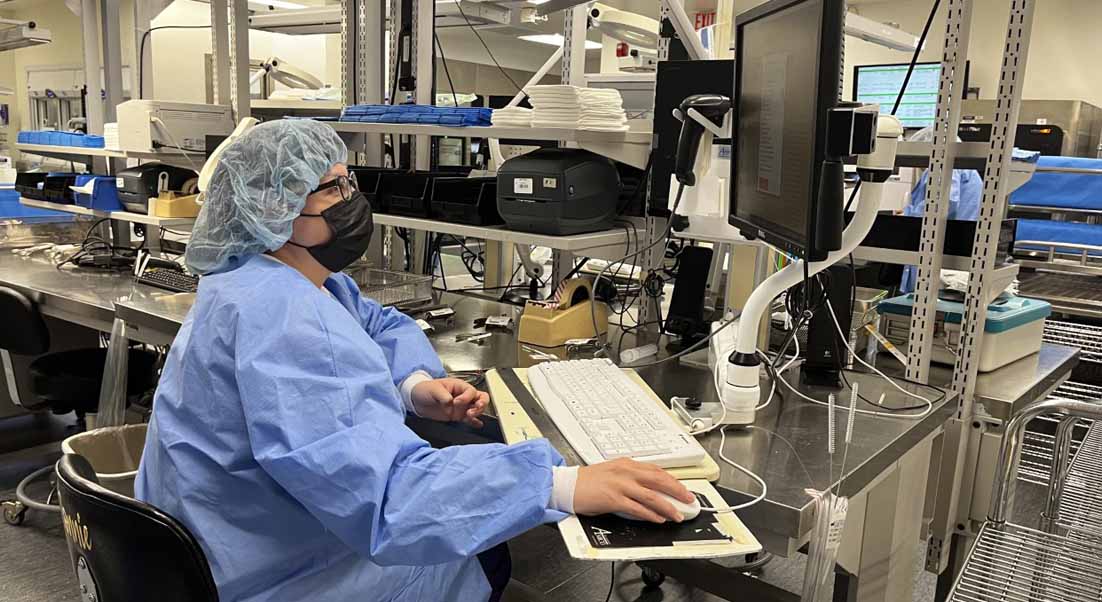
Sterile Processing Department (SPD) is where all medical equipment is thoroughly sanitized and cleaned after surgical procedures. The new SPD on level 2 will expand a new instrument tracking software called the Sterile Processing Microsystems (SPM).
The SPM will contain a record of all documentation related to sterilization and will manage the inventory of surgical items. The software will also forecast the instrumentation needs in the operating rooms and will help staff keep track of tools.
Interventional Platform
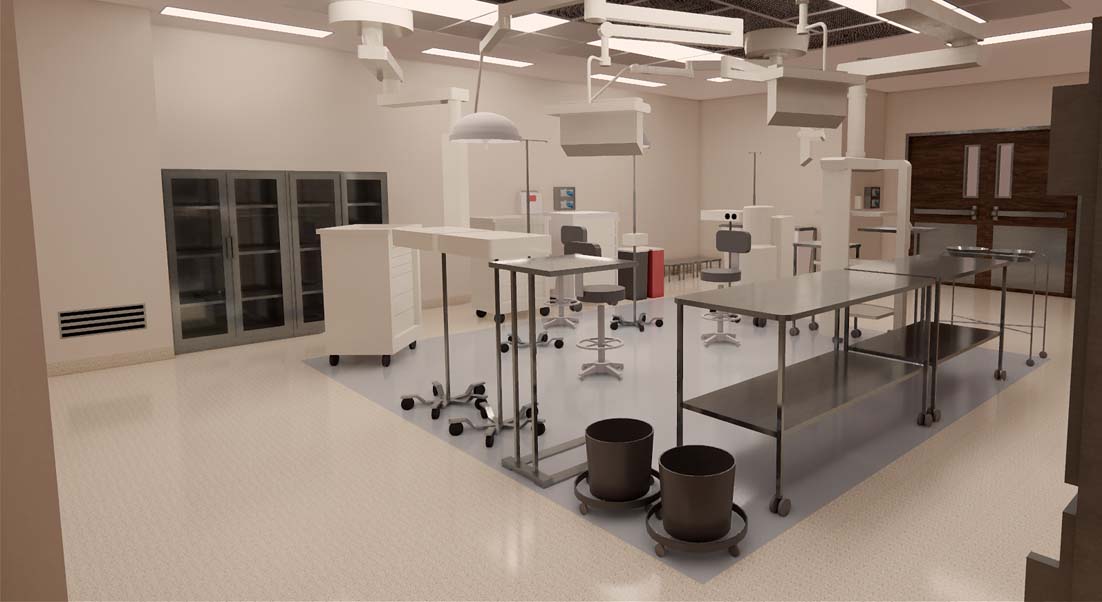
The interventional platform on level 3 will contain four catheterization labs, six interventional radiology suites, a new surgical suite with 18 operating rooms (ORs), and 73 post-anesthesia care rooms (PACUs).
Two of operating rooms will be hybrid-capable so that physicians can perform complex, minimally invasive vascular and neurological surgeries using image-guided technology.
Kevin Sinclair, RN, Associate Chief Operating Officer at UNM Hospital, looks forward to his team working in this expanded and more contemporary space.
The state-of-the-art integration capabilities will also provide consultative and educational opportunities during procedures.
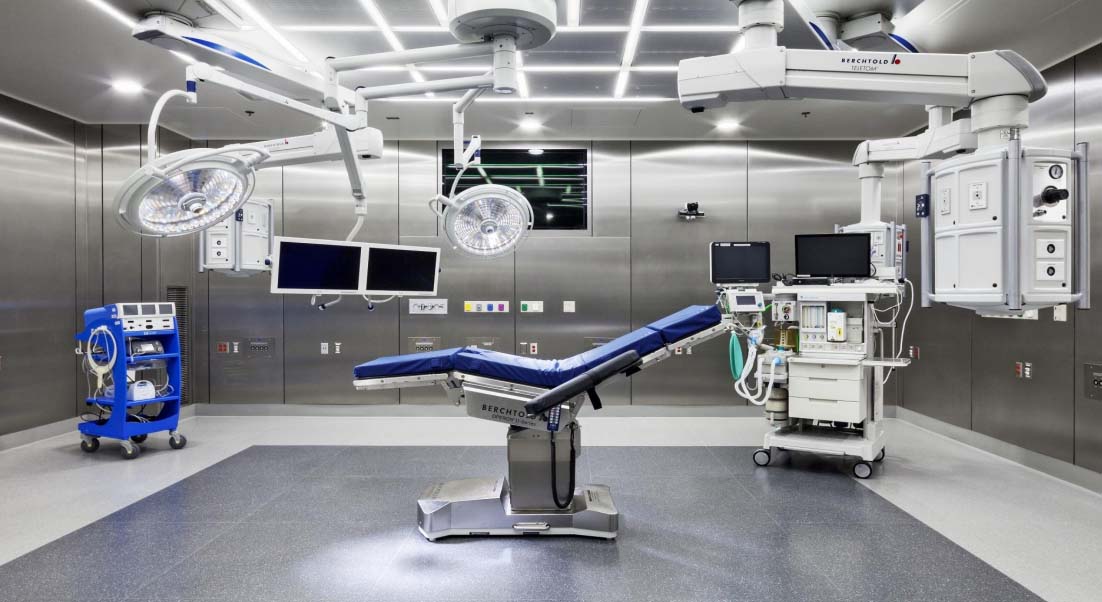
“The state-of-the-art integration capabilities will also provide consultative and educational opportunities during procedures,” he said.
Moreover, the ORs will also utilize a stainless-steel modular wall system, which is made of recycled materials. This futuristic system harbors up to 50% less bacteria than standard operating rooms and dramatically reduces maintenance time.
Imaging equipment
In addition to its presence on the interventional platform, radiology services will be placed in strategic areas throughout the CCT.
The total number of CT (computed tomography) scanners and MRI (magnetic resonance imaging) scanners will both double, from five to 10 and two to four, respectively.
A new portable CT scanner will also be available at a patient’s bedside, allowing clinicians to perform life-saving procedures on critically ill patients.
Intensive Care Units (ICUs)
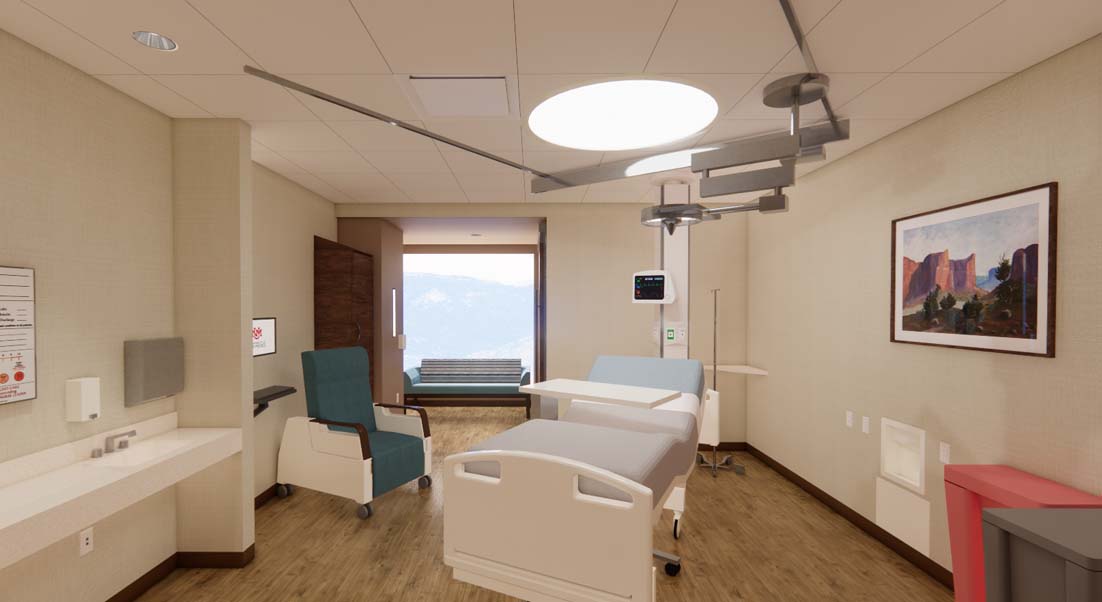
The new adult ICUs on levels 5 and 6 will have 96 beds to care for patients with neurological, cardiothoracic, trauma, and acute medical conditions.
Two procedural rooms will also be present in the ICUs. These innovative spaces will contain the novel use of critical care fluoroscopy and critical care transesophageal echocardiography to apply emergency cardiac or lung bypass to those in cardiac arrest or with acute respiratory failure.
These resuscitation rooms will allow trauma surgeons to rapidly assess and intervene on acutely injured members of our community.
“These resuscitation rooms will allow trauma surgeons to rapidly assess and intervene on acutely injured members of our community,” said Jonathan Marinaro, MD, professor and co-chief of the Center for Adult Critical Care at UNM Hospital.
Centralized Check-In
UNM Hospital has already begun to implement this new process as of February 2024, and plans are underway to expand it into the CCT, as well.
Instead of going to each outpatient clinic to check in for appointments, patients can go to the main lobby of the CCT to register at a workstation.
A centralized check-in system for patients receiving outpatient care will ensure that the registration process will be as easy and seamless as possible.
Internet Protocol Televisions (IPTVs)
IPTVs will be available inside patient rooms and various conference rooms throughout the CCT.
IPTVs deliver cable programming in crystal clear, high-definition on a centralized network. Additionally, tailored messages will be able to be displayed on the screens, including weather alerts, digital signage, and patient and staff education.
UNM Hospital will be one of the first entities in acute health care to deploy and utilize a full IPTV system in the country.
Helipad

The new helipad on level 9 will be the second on the UNM Hospital campus and will accept adult patients. One of its contemporary features includes the automatic foam fire suppression system, which uses a combination of water and a foaming agent to rapidly extinguish fires in seconds.
Moreover, the CCT was designed to stack critical services on floors immediately below the helipad, and a dedicated elevator nearby will enable staff to quickly transport patients to the area of service that they require.
Tower Garage and Central Utility Plant
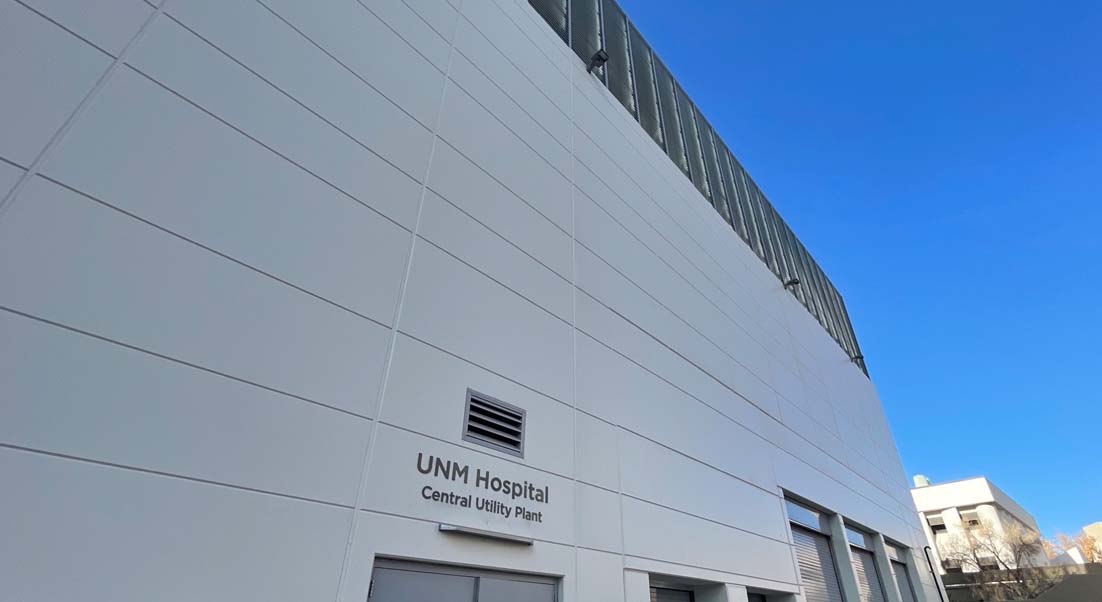
The new Tower Garage, which debuted in June 2022, also enjoys some contemporary upgrades. The Park Assist is a guiding system that uses red and green lights to safely and quickly navigate drivers to the nearest available spot.
On the east end of the parking garage is the Central Utility Plant (CUP). The tower will depend upon the CUP to deliver crucial utilities like emergency generator power and chilled and hot water.
The CUP will also promote eco-friendliness, with high-efficiency boilers, chillers, and generators that will help to lower carbon emissions.
Looking to the Future
Ultramodern equipment and smart design will make the CCT one of the most technologically advanced hospitals in the state.
A new chapter in New Mexico health care will begin when the CCT opens its doors. Staff members at UNM Hospital look forward to serving New Mexicans in this remarkable new facility for generations to come.